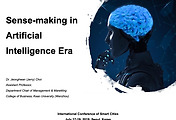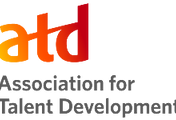Given or Taken - How subsidiary employees cultivate job autonomy in an MNC?
Conventionally, autonomy in the workplace is belief to be given by superiors to subordinates.
However, autonomy can be taken by subsidiary employees at an MNC. In detail, there are positive given and taken autonomy and negative given and taken autonomy.
Voice of engineers at an MNC
Positive Autonomy Given (Grounded frequency: 14) |
Positive Autonomy Taken (Grounded frequency: 31) |
Leaders must demand tough and affordable tasks for subordinates to develop and unleash potential. If an individual achieves the task, leaders can give him/her enhanced authority and responsibility (Director). Leaders who are afraid of developing subordinates who may be excel them in future must leave the organization, since it kills organization (Director). The MNC's systemic and advanced quality process system helps us solving technical problems from local customers (Director and Product Leader 1). An expatriated engineer "B" from HQ issued a local demand of noise problem to HQ, and he brought a lot of supports from HQ R&D. "B"'s efforts helps us solving the problem by changing a core design of the product (Product Leader1). Writing a Concession (Deviation Request - an official request of special application of abnormal parts or process) is always problematic. Because it cannot be resolved in the level of frontline workers, managers facilitate and make a decision to make a progress (Senior Engineer 1). We have four expatriated managers from HQ. A vice president; Director of Finance; Director of R&D; and a Technical coordinator. Especially, the technical coordinator (engineer "B") is very supportive in bridging us to HQ R&D (Senior Engineer 1 and 2). I changed my job from Motor design (4 years) to Fan/Shroud design. I have gotten a higher decision making power in the new job, and it make me fun in work (Senior Engineer 1). When we have a conflict without a solid resolution in this company (subsidiary), we report it to top management (subsidiary) to get support from HQ (Senior Engineer 2). | HQ engineers cannot solve a (local) technical problem though they have advanced technology. (Local) Engineers must go to 'field' to identify real situations, environments, and customer needs, then they must build a hypothesis, test it, prove it, and apply the results to FMEA and design (Director). Self-directed workers create an idea, make a plan to realize the idea, and build a strategy to implement the idea by oneself, then they suggest a proposal to leaders. When the self-directed work is successfully done, the individual can feel great 'fulfillment' which drives him/her to get 'crazy' in his/her work. Leaders must provide the environment for 'self-directed work' (Director). Frankly, the level differences of self-directedness come from personal differences. In the same situation a few engineers have a strong self-directeness attitudes toward his/her works while others stay in a certain boundary of work. So, self-control capability takes 80% of variation of self-directeness attitudes (Department Manager). A (local) Project manager can have an autonomy of changing a brush design because it does not need to change machines or process (Project Leader1). Difference from other R&D teams in this department, I go my own way because I have run my team with myself for a long time, and I still have a certain authority in design for my product (Product Leader 1). Although there is a (HQ) rule of developing 'technical experts' in an area, less than 10% of people engages in it because of low proportion of MBO. But I open technical seminars though my efforts are frequently challenged by managers (Product Leader 1). One day I got a good idea (changing slot numbers), and I contacted with HQ R&D to get a confirmation of potential design change. Since I could not change the core tools (machines), I made a proto tools and samples by myself. After getting a positive results from tests, I reported it to HQ and got the final confirmation of design change. It takes around one and half year, but I led major processes of the change because I could justify the technical and financial competencies of my team (cheap labor cost, quick process) (Product Leader 2). We (subsidiary engineers) build 4~5 technical options and bring them to decision-makers. However, we filter technical options before bringing them to decision makers, and guide decision-makers to choose more 'feasible' options (Product Leader 2). The most important task in my job is 'drawing cooperation' from people both in HQ and in this organization (subsidiary). This human relational skill is not an engineering skill, but it is most important to proceed organizational tasks because an individual cannot solve a technical problem by himself. Collective problem solving is essential in my job, and 'drawing cooperation', thus, the most important skill in engineering job. (Product Leader 2). Engineers at the advanced R&D center (highly specialized in designing and testing Fan & Shroud) in the U.S. (Waltham) have higher autonomy in their jobs. The U.S. subsidiary have focused on a product several decades, and the technical speciality of the subsidiary is highly respected and appreciated. 4~5 engineers at the U.S. subsidiary R&D center evaluate samples from HQ and the other subsidiaries. The U.S. subsidiary do not follow the general rule of the MNC, but it has its own process of work. Decisions are made very informally through meetings or workshops. Engineers at the center are seemed like 'independent army' (Product Leader 3). We (subsidiary engineers) do not report very detail technical things to managers but we filter technical option and present a few feasible things to managers. When we bring the filtered options, we informally report problems of opted out options. In that situation, managers aware the problem and do not make critical objection (Senior Engineer 1). Because R&D department of this company (subsidiary) is not a research institute but application oriented one, we don't need theories. We need 30% of technical competencies and the other 70% of competencies are 'teamwork', 'relational skill', leadership', 'communication skill', 'english skill' (Senior Engineer 1). When we got an ambiguous data, for example the first and the second test results are not compatible, we conduct extra tests confidentially. We do not officially report what we are doing to supervisor, but we have to prepare alternative options. Product Leader 3 is very good at this type of confidential and self-directed work. PL3 leads managers to his intention direction. (Senior Engineer 2). Although the company strictly prohibits 'making or testing unregistered samples', supervisors do not restrict our confidential works. But supervisors ask to us "Don't you have any further information from your self-directed work?" Supervisors strongly encourage us to do 'self-directed works' regardless of process. In my case, I did not get any negative feedback from supervisor for my confidential and self-directed works even I failed at those works. (Senior engineer 2). Although many (local) supervisors rejected the request of sending me to a training program at HQ R&D, my direct supervisor (Product Leader 1) confidentially sent an email and communicated with HQ HR and R&D and got an official invitation for the program. I could come the training program and I am highly motivated to work hard (Junior Engineer 1). |
Negative Autonomy Given (Grounded frequency: 30) |
Negative Autonomy Taken (Grounded frequency: 7) |
Lassez-Faire style leaders cannot develop people. For example, a leader who sign on a document and put it aside without any demands for extra work teach nothing for his/her subordinates (Director). A leader who is afraid of challenges from his/her subordinates kill them. This is the real problem in organization (Director). Top management does not want to see quality issues at the quality meeting, but they want to see 'solutions'. We (employees) need to solve and lead everything before issuing a problem in front of top management in this company (Department Manager). A product series is totally changed from a local design to a global design.The most challenging thing is that we can change the design of the global product to address local demands (Department Manager). We (subsidiary engineers) led project as project leaders before. But now, Sales persons lead projects after application of HQ rules. We (Engineering department) become a member, not a leader, and we lost our power (Department Manager). I want to send (local) engineers to HQ to develop their skills, but cannot because of the lack of Manpower in my department (Department Manager) I cannot do anything to address the lack of manpower problem. I try to persuade my subordinate, but it does not work. So, I purposefully ignore it, or I coercively suppress my subordinates (Department Manager). You need to understand the uniqueness of local demands. Local customers frequently request 'unacceptable' things for us (MNC). Local customers do not have awareness of global culture (Product Leader 1). This company is a global MNC. HQ controls over everything. We (subsidiary engineers) take over HQ's advanced technology and transfer it to our local customers. Our (subsidiary engineers) role is only 'coordination' between HQ and local demands. This is the normal process in MNC (Product Leader 1). Global MNC has a strong guideline in designing a product. If a new design is needed, we (subsidiary engineers) definitely need to get an approval from HQ (Product Leader 1). We (subsidiary company) have very little understanding about 'project leader' system comparing with HQ country. In this company, project leaders have little power (autonomy) but full responsibility. This is the biggest complaints from project leaders. This is the problem of organization culture and team culture in this company (subsidiary company) (Product Leader 1). Local customers in this country (subsidiary country) has a very strong 'military culture' in business. If they order something, all members have to accomplish it anyway by all means. Comparing to the local culture, this company (subsidiary company of an MNC) has a supportive culture. We help each other and we have a communicative culture (Product Leader 1). Other (engineering) teams in this department do not make any decision but wait an order from a director. The problem is that the director is too authoritative to let those teams make a decision. Those teams commonly have a meeting in front of the director. Those teams totally lost their opportunity to propose creative ideas and efficient work processes. (Product Leader 1). I cannot change the design of a product because I have no power (authority, autonomy). Even in this situation, other teams are not cooperative to us (subsidiary engineers), and this (uncooperative attitude) makes troubles in project works (Product Leader 1). We (subsidiary engineers) cannot change a design of a product after production tools have set in line (pilot stage). We can 'manipulate' minor things, but big changes, such as changing machines or production process, is not possible (Product Leader 2). There is no place to learn (motor) design skills in this country (subsidiary country). We (subsidiary engineers) need to come HQ to learn motor technology, but HQ do not want to teach the technology (Product Leader 2). Top management and managers delayed a decision of a changing a product design for addressing local demands because they knew a new global product would be launched soon. Leaders didn't want to invest in addressing the local issue, and they intentionally ignore the issue. (Senior Engineer 1). We (subsidiary engineers) have to comply the HQ Quality Process Manual. But it is not possible to follow or keep whole rules from the manual because the urgent demands from local customers. In this situation, managers fight against each other to avoid any responsibility in writing a 'concession letter (deviation request)' It seems like a game of "Belling the Cat" (Senior Engineer 1). Decision making power (or autonomy) is getting decreased significantly in this company (subsidiary company). A biggest local customer demands many special requests for changing, but it will be very hard to meet those local demands in the global products. It takes a lot of time to get decision from HQ, and it is really hard to get it. I expect that the issue (hard to change a design of a global product to meet local demands) is getting harder and harder, and it will be the most significant problem of us (subsidiary engineers). (Senior Engineer 1). A engineering director can control engineering and sales department, but he cannot control over manufacturing, quality, and purchasing. Manufacturing, Quality, and Purchasing department has been strongly integrated with HQ manufacturing, quality, and purchasing. So, they become 'out of control' teams for us (Senior engineer 1). I get a global design from the U.S. subsidiary, and make application for local customers (Junior Engineer 1). Because of HQ's delay of a global product design release, I (subsidiary engineer) had to delay of whole project schedule for a local customer. Many project members from other department critiqued for my delay, and they claimed that I had to keep the rule. In other hand, when I report this issue to my supervisor, he didn't want me to take any responsibility for the problem. All members and the supervisor avoided any risks for the schedule delay, and I was really frustrated about this 'conflict' that is not produced by my fault but HQ! (Junior Engineer 1). | Those who work for descending orders have little creativity and little work design capability, and they cannot be a leader (Director). Employees must make a choice by themselves, and design a work by themselves. Descending orders from others is not fun but boring and irritating! (Director) We (subsidiary engineers) cannot take whole described processes in the global manual because we are 'foreigners' in this organization (MNC) (Product Leader 1). As a foreign company, (local) leaders do not want to take responsibilities for works. I do not get any punishment nor feedback if my misconducts is not related with 'performance results'. Leaders frequently ignore my conducts, and let me go because they do not feel any responsibility. When I worked for a domestic company, directors and middle level managers took great responsibilities at work, and they give a strong mentorship. But I have no mentorship or guide at all, but time consuming (Junior Engineer 1). For example, I had no idea about 'motor design' when I firstly came to this company (subsidiary). I wanted to know and learn about the product. But nobody teaches me about what to do to learn about motor design. If I was in the previous company (a domestic company), somebody (maybe supervisor) would hand me a 'book' of motor design and pushed me to study it. In this company (subsidiary), I can enjoy easy going without learning about motor design, if I do not 'learn by myself'. Everybody in this company (subsidiary) is seemed to 'come, stay, and back' without little interests in work. If one is making a product, he or she must have a responsibility for the product. But nobody in here have a passion for the product or learning about it. It is a dark side of this company (subsidiary) (Junior Engineer 1). |
Can individuals cultivate and enhance power of control of their works - increasing autonomy or job control with certain efforts?
Here is a deviant case that is constructive for an employee and his organization.
A Korean R&D engineer (let's call him as 'S') who works for a multinational manufacturing company in Korea tests several electric motor samples that are built by himself to find a root cause of uncomfortable noise. 'S' did not report this secret noise test to his Korean supervisor nor to his co-workers because he wanted to avoid any unnecessary paper works, dispute with unionized sample shop workers, or time delay for decision-making.
Making and testing unregistered samples is strictly prohibited in his organization, but 'S' believes that he can find a solution through the extra test. Frequently, the engineer has conducted hidden works under the conscious permissiveness (or tacit agreement) from his supervisor and co-workers because he brings constructive alternatives basing on his self-directed hidden works.
'S' is recognized as a highly capable and self-directed worker not only in his organization but also by his internal and external customers. Although his extra work on secret experiments are not financially rewarded by the organization, he wants to make influences on decision makings with his solid data.
He focuses on his work of solving the uncomfortable noise problem because he feels good whenever he can give a constructive solution for others. The local engineer wants to bring a solid solution of the noise problem to a technical meeting with a Korean customer who claims the quality problem.
Clocks is running to midnight, but his secret experiment is going on.
From the case, autonomy can be taken or cultivated by subsidiary employees in MNC.
Do HRD professionals need develop skills for cultivating autonomy for subsidiary employees?
How to develop those skills?
'Essay of Leadership > Research' 카테고리의 다른 글
| Sensemaking in the Artificial Intelligence Era! (0) | 2019.07.23 |
|---|---|
| What is the "Talent Development"? (0) | 2014.05.24 |
| Shaping a Research Topic for Vitality Study in MNC. (0) | 2012.08.27 |
| Problematizing the Tension between Autonomy and Control at the workplace. (0) | 2012.07.31 |





댓글